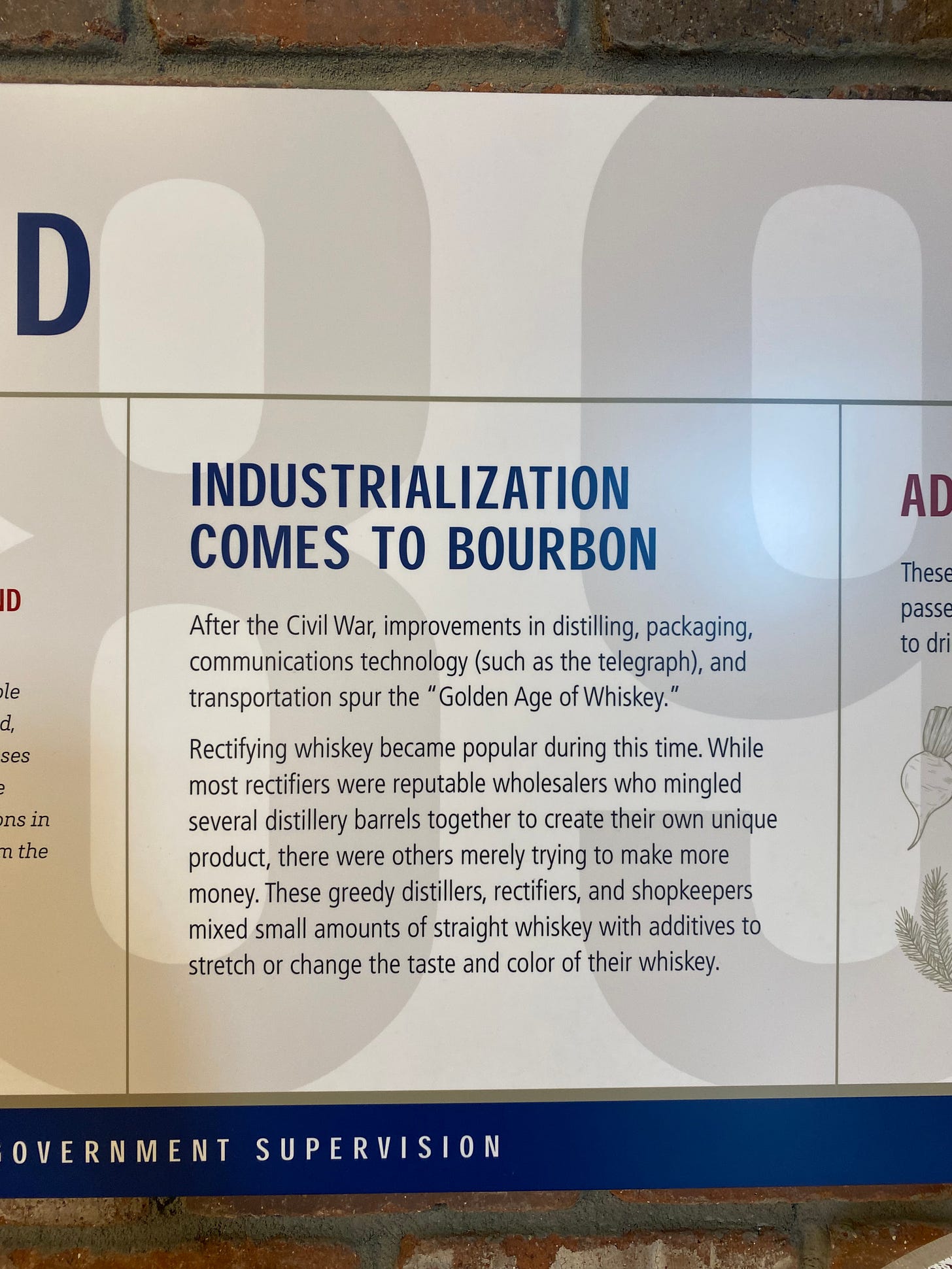After visiting four distilleries, 3 big ones and 1 small one, it is clear to me how entangled the history of bourbon is with American history. As I mentioned earlier, one of the best historical reviews is “Bourbon Empire” written by Reid Mitenbuler. I also recently read, Pappyland by Wright Thompson and here are a few points from that book.
The history of whiskey is core to the story of America. It is also the story of taxes and regulation. Thompson said, “In 1791, Congress passed a whiskey tax, and the farmers and distillers of Western Pennsylvania went ‘batshit crazy.’ This was the first bubbling of the tea party movement, the antigovernmental strain that continues to exert great control over American politics.”
It taxed farmers who needed to make whiskey to maintain value, so the farther away from the seat of power, the more likely to be hit with this tax. It forced George Washington to send in troops and it is now known as the Whiskey Rebellion. Until it was quelled, there was real fear it could turn into a second revolution.
In early America, making whiskey was akin to soap making, grain grinding or tanning animal pelts, it was storage for excess corn that had value. Eastern farmers could get their product to market but the western farmers needed to convert it to something that would last and that something is whiskey.
Thompson says that “In the process, the major debate of American public life was cemented. Nearly every political and cultural flashpoint we have experienced since is descended from this divide. Hamilton favored Wall Street and Jefferson favored Main Street. Violence and discord over Hamilton vs Jefferson remain the greatest threats to the health of our experiment in democracy.”
At the time of the rebellions, the Ohio River valley produced nearly all whiskey and it was mostly rye. Today, it is Kentucky which produces bourbon. The farmers and distillers ran from the tax man so there is a connection since Hamilton’s tax passed in 1791 and Kentucky became a state in 1792.
Pappyland is also the story of Julian Van Winkle and his quest to restore his family to whiskey making greatness. It was his grandfather, Pappy Van Winkle that made a name for himself and his distillery, Stitzel-Weller. Stitzel-Weller still operates but Julian is making his Pappy (which sells for sometimes exorbitant prices) at Buffalo Trace.
But to return to the history of bourbon. After the Civil War, higher taxes were placed on whiskey in an effort to cover the expenses from the war. Moonshine became a way to avoid the taxes. 1875 was one of the most corrupt periods of American history, the Gilded Age. At that point, half of all federal revenue came from alcohol taxes and that was true until the income tax in 1913.
The next big event was of course Prohibition. Moonshine became an even bigger deal and law breaking was rampant. From there, we have repeal, and then bourbon’s trajectory to the lows of the 60s and 70s and now the major high that bourbon is experiencing today as a quintessential American spirit.








I found it so fascinating when we visited Four Roses YEARS ago that it was one of the only distileries that stayed in production during prohibition because they had a special medial license to keep distilling. I might have to share this when I talk about our visit to Makers Mark ;-)